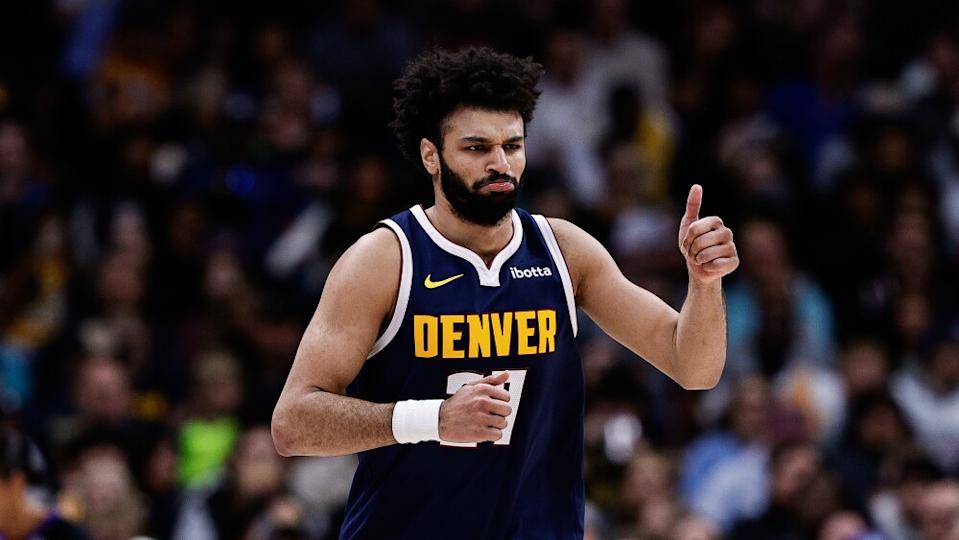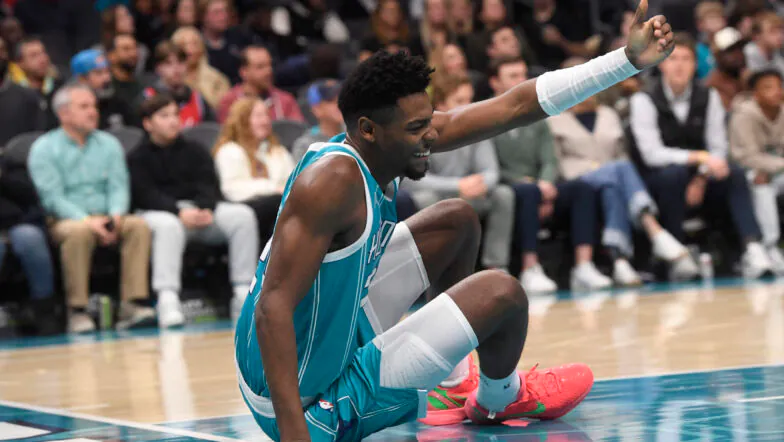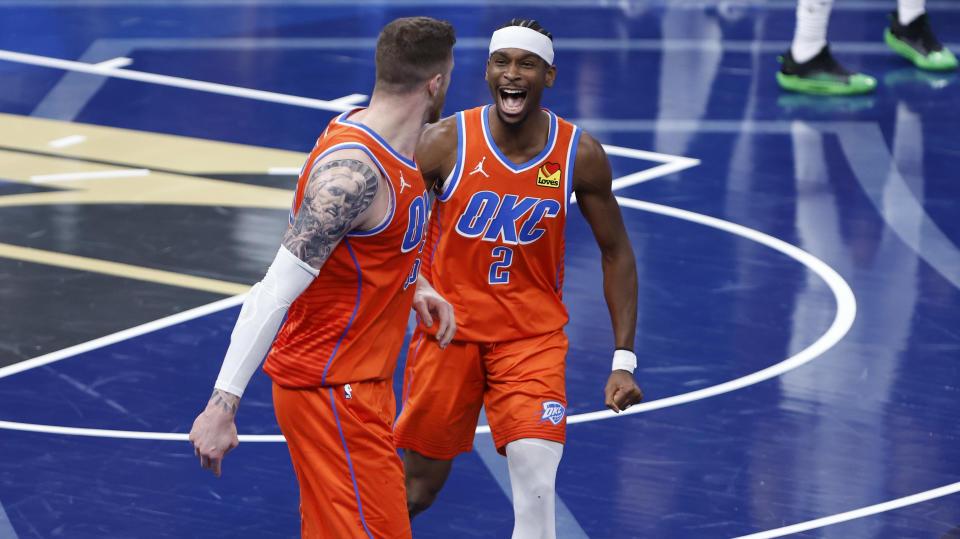Solving the Offensive Puzzle: Can the Suns Find the Answers?
Despite both teams having the same number of total shot attempts, Minnesota took a 10-shot lead in 3-point attempts, making nine shots compared to the Suns' eight. They also dominated the free-throw line with a 30-19 advantage in attempts. Ultimately, the Timberwolves secured the win by utilizing their strategic shooting and committing six fewer turnovers than their opponents.

Five days later in Game 4, the Suns shot 51.4%, the Wolves shot 46.1%, and Minnesota completed the sweep with a six-point win. Over the four games, the Suns had 40 fewer shooting opportunities* and made 33 fewer 3-pointers than their opponent.
* Shooting opportunities = field goal attempts or trips to the line
In the regular season, Phoenix was tied with the Denver Nuggets for the most games (59) in which they had a higher field-goal percentage than their opponent. But while the Nuggets were 54-5 (.915) in those games, the Suns were 43-16 (.729), with that .729 mark being the worst among the 18 teams that had winning records overall.
Here are some numbers and film on the Suns’ math problems and how they could fix them this season…
1. Shot discrepancy
The Suns averaged 3.3 fewer shooting opportunities than their opponents in the regular season, with only the Lakers having a worse discrepancy.
Biggest discrepancy, shooting opportunities per game, 2023-24
Team
Own
Rank
Opp.
Rank
Diff.
L.A. Lakers
98.2
19
101.7
29
-3.5
Phoenix
96.4
25
99.7
19
-3.3
Washington
100.3
5
103.4
30
-3.2
Milwaukee
99.0
13
101.4
28
-2.4
Detroit
97.8
20
99.8
21
-2.0
Shooting opportunity = FGA + (0.44 * FTA)
The Suns’ issues were two-fold. They ranked 28th in turnover differential, committing 2.2 more per game than their opponents. And they were 21st in offensive-rebound differential, grabbing 0.8 fewer per game.
As they got swept in the first round the playoffs, the Suns grabbed just 41.8% of available rebounds, the second lowest rate for any team in any series in the last 15 years. The Wolves were bigger, but also quicker to the ball…
2. The turnover problem
Turnovers weren’t as much of a problem in the playoffs as they were in the regular season, when the Suns were one of three teams to rank in the bottom six in both turnover rate (15.0 per 100 possessions, 25th) and opponent turnover rate (12.8 per 100, 25th). The other two teams – the Pistons and Jazz – were 14-68 and 31-51.
Though Devin Booker had the ball in his hands a lot more (420 to 304 total minutes), the player with the most turnovers was Kevin Durant, who had 244 to Booker’s 178. Durant’s turnover rate (10.9 per 100 possessions used) was down from the previous season (11.3), but was still the seventh highest among 50 players with a usage rate of 25% or higher.
Because he’s so tall, Durant’s dribble can be poked away, and a lot of his turnovers come when opponents get their hands on the ball when he gathers for a shot or pass…
On the other end of the floor, the Suns weren’t the most conservative defensive team in regard to how they defended pick-and-rolls, but they couldn’t force turnovers nearly as well as their opponents.
3. Too much mid-range?
Beyond the shooting opportunity discrepancy, the Suns were also fighting the math that says “three is greater than two.”
The Suns were one of two teams – the Thunder were the other – that ranked in the top five in both mid-range field goal percentage (47.4%, second) and 3-point percentage (38.2%, fifth). But their ratio of 3-point attempts to mid-range attempts (2.4/1) ranked 29th, higher than only that of the Chicago Bulls (2.2/1).
And while the Suns were a great mid-range shooting team, those mid-range shots (0.95 points per attempt) weren’t worth nearly as much as the 3s (1.15).
Mid-range shots are necessary, especially with how most bigs defend most pick-and-rolls. But the Suns probably need to increase that ratio of 3s to mid-range jumpers, so they’re not always fighting the math, needing to shoot much better than their opponents.
There were 213 players who attempted at least 200 shots from outside the paint (not including backcourt shots) last season. And the Suns actually had three of the top eight in regard to individual 3-point attempt / mid-range ratio. But those three guys – Grayson Allen, Royce O’Neale and Eric Gordon – ranked fourth, sixth and eighth on the team in total field-goal attempts.
The three guys who took the most shots – Durant (0.8), Booker (1.1) and Bradley Beal (1.6) – ranked 205th, 201st and 189th in 3PA/mid-range ratio among those 213 players with at least 200 field goal attempts from outside the paint.
Beal’s 43.6% on catch-and-shoot 3-pointers was his best mark in the 11 seasons for which we have tracking data, but he attempted just 3.1 catch-and-shoot 3s per game. That was up from his last two seasons in Washington, but lower than every season prior to that and just fifth on the Suns.
Like Durant, Beal can be a little too eager the ball on the floor instead of taking an available catch-and-shoot look from beyond the arc…
Beal, Booker and Durant are all incredibly talented players who all shot better than the league average inside the arc last season. There’s no team better equipped than the Suns to take advantage of defenses that are willing to yield mid-range shots. But the math dictates that they should be taking more 3s when they’re available.
4. Can Budenholzer and a real point guard fix the math?
Having a real point guard could help all three of those guys get more catch-and-shoot looks from deep. Tyus Jones, who the Suns signed to a minimum contract, can also help with the turnover differential … on both ends of the floor. He’s led the league in assist/turnover ratio in each of the last six seasons, and he’s one of two players – Jimmy Butler is the other – that have had more steals than personal fouls in each of the last six.
The Suns also made a coaching change, replacing Frank Vogel with Mike Budenholzer. While Budenholzer’s Milwaukee Bucks led the league in points allowed per 100 possessions twice in his five seasons there, they never forced a lot of turnovers, ranking no higher than 24th in opponent turnover rate during his tenure.
In Khris Middleton, the Bucks also had one of the best mid-range shooters of the last 10 years. But their offense was obviously built around a much different player (Giannis Antetokounmpo) than anybody on the Suns. They were in the middle of the pack when it came to their ratio of 3-point attempts to mid-range attempts (3.4, 16th in 2022-23).
That (3.4) would be a great number for Budenholzer’s first season in Phoenix. Rebounding improvement will be harder to come by, but if the Suns can increase that 3-point rate while also cutting down on turnovers, they won’t be fighting the math so much. And that will allow them to make the most of their top-line talent.
* * *
John Schuhmann is a senior stats analyst for NBA.com. You can e-mail him here, find his archive here and follow him on X.
The views on this page do not necessarily reflect the views of the NBA, its clubs or Warner Bros. Discovery.
RELATED STORIES






LATEST NEWS







